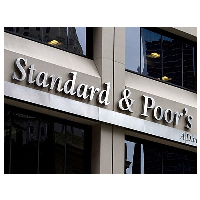5 Years after Contributing to Financial Meltdown, S&P is Back to Giving Inflated Credit Ratings

Inflating the credit-worthiness of dicey Wall Street financial securities was a winning strategy for the nation’s top ratings agencies before the financial collapse of 2008 put a crimp in their style.
But despite multiple multi-billion-dollar lawsuits filed by the federal government and more than a dozen states—including one in California—Standard & Poor’s (S&P) is revisiting those discredited practices, according to a study commissioned by the New York Times. California Public Employees’ Retirement System (CalPERS) and the California State Teachers’ Retirement System (CalSTRS) were both large investors in mortgage-backed securities and other financial instruments rated by S&P.
An analysis of S&P by Commercial Mortgage Alert found that the ratings agency is reclaiming market share it lost to its chief rivals, Moody’s Investor Services and Fitch, by giving higher ratings than them to certain mortgage-backed securities. S&P has given the higher ratings on at least a part of half the deals it has made since September 2012 when changes to its policies were put in place, according to the study.
“Before the change in standards, it rarely offered higher ratings,” the Times reported.
Wall Street underwriters need agencies to rate their securities before they look for buyers. Common sense, and the market, dictates that they seek the highest possible rating to enhance the value of their product. After the financial crash, S&P sought to temper criticism of its sketchy rating practices by hiring some of its critics to reshape its policies and the corporate culture that produced them.
S&P hired David Jacob and Mark Adelson, who had their own consulting firm and advocated for more scrutiny of bond ratings, and gave them key positions in 2011. The result was a sharp decline in the number of mortgage-backed bonds brought to S&P, and the two were gone in a matter of months.
New and improved standards were put in place by September 2012 and business began to pick up. The company offered higher bond ratings than the competition on the first five deals that presented themselves and won all five, according to the Times. The same was true of the five most recent deals the analysts looked at.
Edward Shugrue, chief executive of the bond investing firm Talmage, told the Times that other ratings companies will be forced to follow suit and that the impending result is obvious. “You can see that we are slipping our way back to 2007,” he said.
In the meantime, the lawsuits filed against S&P in February are wending their way through the courts. On Friday, the federal government asked the U.S. District Court in Manhattan to move cases filed by 15 states and the District of Columbia back to state courts because federal courts lack the jurisdiction to rule on the cases’ alleged violations of state laws against unfair consumer practices or deceptive business practices.
S&P wants those cases consolidated into one big federal case that will turn on its First Amendment right to offer opinions to its clients. The states and the federal government argue that the constitutional argument is one raised by S&P and that court venues are determined by the arguments made by plaintiffs, not potential defense arguments.
California’s lawsuit, filed in February in San Francisco Superior Court, seeks $4 billion in damages for S&P actions the state claims cost California’s giant pension funds $1 billion. S&P is accused of claiming rating securities as safe and sound although they allegedly knew they were not.
The California lawsuit cited more than 10 reasons why the state thought S&P culpable. The state is seeking triple damages under the False Claims Act.
A spokesman for S&P called the Times article “inaccurate.” A hearing on the matter, and S&P’s request that the cases be dismissed, is scheduled for October 4 in the Manhattan court. S&P.
–Ken Broder
To Learn More:
Banks Find S.&P. More Favorable in Bond Ratings (by Nathaniel Popper, New York Times)
U.S. Says States’ Lawsuits vs S&P Belong in State Courts (by Jonathan Stempel, Reuters)
10 Reasons Why California and U.S. Sued S&P Ratings Firm for Billions (by Ken Broder, AllGov California)
- Top Stories
- Controversies
- Where is the Money Going?
- California and the Nation
- Appointments and Resignations
- Unusual News
- Latest News
- California Forbids U.S. Immigration Agents from Pretending to be Police
- California Lawmakers Urged to Strip “Self-Dealing” Tax Board of Its Duties
- Big Oil’s Grip on California
- Santa Cruz Police See Homeland Security Betrayal in Use of Gang Roundup as Cover for Immigration Raid
- Oil Companies Face Deadline to Stop Polluting California Groundwater





